Search
Remove Ads
Advertisement
Summary 
Loading AI-generated summary based on World History Encyclopedia articles ...
Search Results
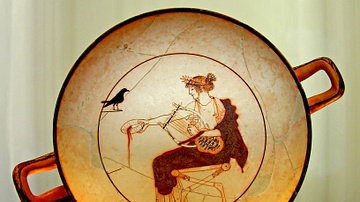
Definition
Lyre
The lyre was a stringed musical instrument played by the ancient Greeks. It was probably the most important and well-known instrument in the Greek world. The lyre was closely related to the other stringed instruments: the chelys which was...

Interview
Interview with Michael Levy
Join World History Encyclopedia as they talk to Michael Levy, a prolific composer of the ancient lyre all about his inspiration and knowledge of the instrument. If you want to hear Michael perform, be sure to check out our video interview...
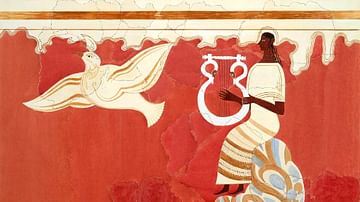
Image
Lyre Player and Bird Fresco
A fresco from the throne room of the Palace of Nestor at Pylos, often referred to as the 'Orpheus Fresco' depicts a seated lyre player and a bird in flight. It dates to c. 1300 BCE and this watercolour reconstruction was completed by Piet...
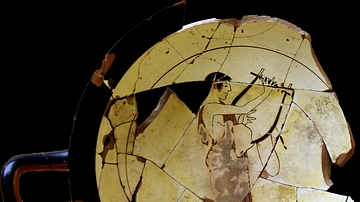
Image
Lyre Plyer
A young male tunes his tortoise-shell lyre, and a hare waits in anticipation.
Fragmentary Kylix, c. 480 BCE. (Museum of the Ancient Agora, Athens)
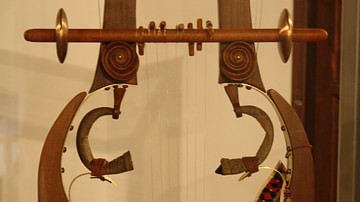
Definition
Ancient Greek Music
Music (or mousike) was an integral part of life in the ancient Greek world, and the term covered not only music but also dance, lyrics, and the performance of poetry. A wide range of instruments was used to perform music which was played...

Video
The Ancient Lyre and Kithara with Michael Levy
Join World History Encyclopedia as they talk to Michael Levy, a prolific composer of the ancient lyre and kithara all about his inspiration and knowledge of the instrument. There are a few tortoiseshell lyres that survived, like the Elgin...
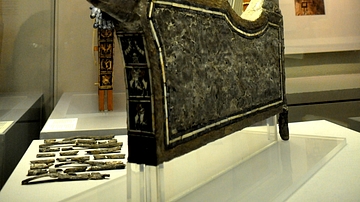
Image
Silver Lyre, Ur, Mesopotamia
This lyre was found in the 'Great Death-Pit', one of the graves in the Royal Cemetery at Ur. From Ur, southern Mesopotamia, Iraq. Early dynastic period, 2600-2400 BCE. (The British Museum, London)
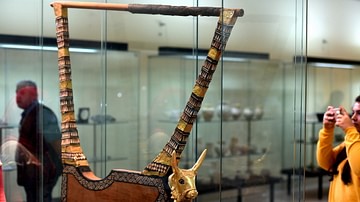
Image
The Golden Lyre of Ur at the Iraq Museum
This is the finest among all lyres found at the Royal Cemetry at Ur and was given to the Iraq Museum; the other lyres were divided between the British Museum in the UK and the Penn Museum in the USA. The head of this bull is a replica and...

Image
Apollo with Lyre
A kylix depicting the god Apollo pouring a libation and holding an early version of the lyre (chelys) which was made from the shell of a tortoise. The bird may represent the crow which announced the marriage of the nymph Aigle-Korone, the...
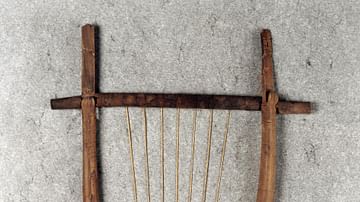
Image
Tortoiseshell Lyre
Wooden lyre with a tortoiseshell soundbox, restored from remains, found in Athens, dated to the 5-4th century BCE.
The British Museum, London